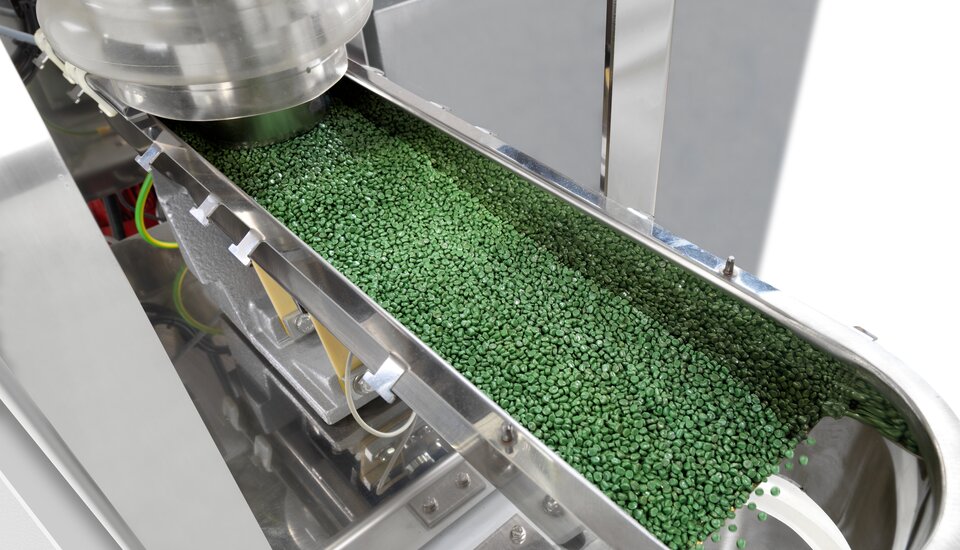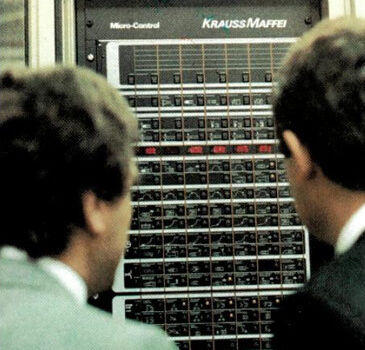
Trends & Markets
A crystal-clear perspective
| Jochen Mitzler, Martin Würtele, Jens Fiedler
Manufacturing optical components
Everyone who wears glasses knows: A tiny fleck on the lens ruins the view. And in terms of headlights, light scattering in the wrong direction is even a safety issue. Manufacturing optical components in injection molding is therefore a demanding task involving a certain level of responsibility, for which KraussMaffei delivers the necessary expertise.
Dealing with light is always challenging, and the substitution of glass with polymers continues, since plastic is more lightweight and offers substantially more freedoms in terms of the integration of various functions in one component. As such, a product can contain free formed surfaces, lenses and prisms with various wall thicknesses as well as micro structures. The most important driver of innovation is the automotive industry, with its full LED front headlights featuring areas for main beam headlights, dipped lights, curve lights, daytime running lights, and their experts predict strong growth.

Light bars e.g. for LED headlights
manufactured in the multi-layer process
Challenge: Tolerances and transparency
The business prospects are excellent as long as one has full command over the fundamentals for the production of optical components. Next to compliance with tolerances, the central concern is the perfect transparency of the lenses; this can be impeded slightly by inner tensions that can influence the beam path of the light. In large wall thicknesses, shrinkage is critical, contamination of the material with dust causes black spots, and the PC or PMMA turns yellow by thermal oxidation if the dwell time of the melt in the machine is too long. Therefore, the entire production change and systems engineering need to be taken into consideration, beginning with dust-protected material supply. The plasticizing unit, the heart of every injection molding machine, must be precisely shot-weight calibrated for optical products, and highly wear-resistant variants are always used for its components. For plastics that have a tendency to adhere, even a special coating may be required.

For optical applications
molds with compression function are recommended
In order to keep the product as tension-free as possible, injection compression molding technology is well recommended. In the process, the melt is injected into the still slightly-open mold, which completely closes only afterwards. In this way, a uniform pressure level is present in the entire cavity; longer flow paths become possible, voids and sunk spots are prevented—and also birefringence effects caused by inner tension. A robust machine model and the highest platen parallelism are important for this technology. The CX series offers these, thanks to its high system rigidity and the wide range of equipment options. The GX is ideal for larger clamping forces, as it features an optional platen parallelism closed-loop control system.
Production topics: Cost-efficiency and functional integration
Whether substitution of glass with plastic is feasible is decided by cost-efficiency and the integration of multiple functions in one component. In the former case, multi-cavity systems and multicomponent technology create attractive conditions. Particularly for thick lenses, building up optics in layers is the means of choice because multiple thin individual layers cool faster than a single thick one, and the overall cycle time is reduced correspondingly. Antireflection of optical elements by moth-eye structures of the insertion of circular steps into what is called a Fresnel lens demonstrate what is functionally possible. Both cases can be implemented in conventional injection molding only with difficulty, but success comes with dynamic mold heat-balancing, which briefly but strongly heats up the mold in the respective place. Due to its lower viscosity, the plastic is then capable of rendering all structures with precision. Or the manufacturer goes one step further and chooses liquid silicone (LSR) for the Fresnel lens, as KraussMaffei demonstrated it at the 2017 Fakuma trade show using a 5 g lens on an all-electric PX-SilcoSet machine.



















